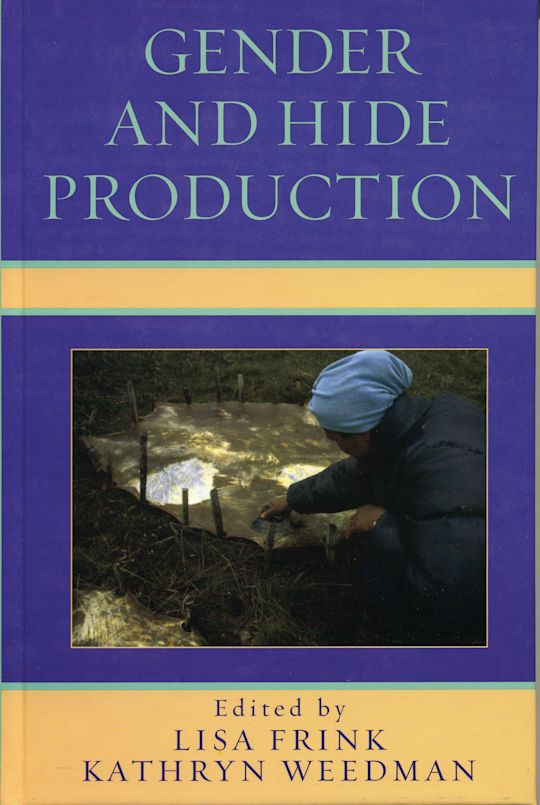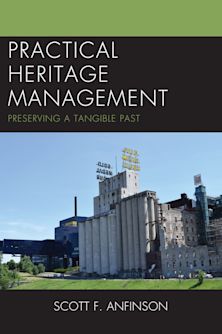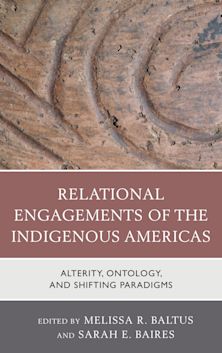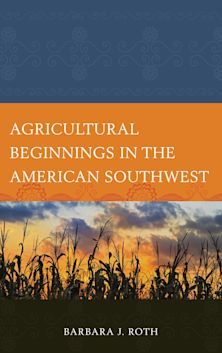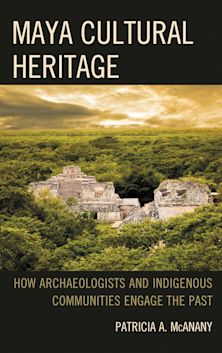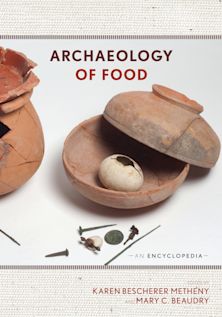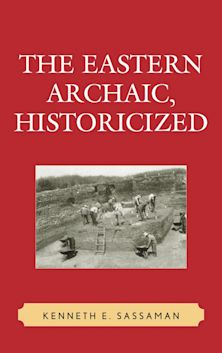- Home
- ACADEMIC
- Archaeology
- Archaeology - Other
- Gender and Hide Production
Gender and Hide Production
- Textbook
Gender and Hide Production
- Textbook
For information on how we process your data, read our Privacy Policy
Thank you. We will email you when this book is available to order
Buy from Bloomsbury eTextBooks
You are now leaving the Bloomsbury Publishing website. Your eBook purchase will be with our partner https://www.vitalsource.com.
Your credit card statement will show this purchase originating from VitalSource Technologies. They will also provide any technical assistance you might require.
You must sign in to add this item to your wishlist. Please sign in or create an account
Description
People have processed hides for mundane, exchange, and ritual items since the earliest paleolithic cultures, yet the highly gendered nature of these activities remains obscured in archaeological research. Editors Lisa Frink and Kathryn Weedman have assembled a collection of diverse essays that take gender as a central point of orientation in hide production processes and reflect on their vast geographical and temporal range, injecting the critical cultural variable of gender into our archaeological interpretations. Chapters include ethnohistoric and ethnographic research among mobile and sedentary populations of North America, the Arctic, and Africa and their applications for understanding prehistoric, protohistoric, and contact period settings. This text will prove enlightening to researchers of archaeology , anthropology, and gender studies, as well as those interested in division of labor research.
Table of Contents
2 Chapter 1. Introduction to Gender and Hide Production
3 Chapter 2. These Boots Were Made for Walking: Moccasin Production, Gender, and the Late Prehistoric Hideworking Sequence on the High Plains of Colorado
4 Chapter 3. The Shifting Role of Women and Women's Labor on the Protohistoric Southern High Plains
5 Chapter 4. Late Prehistoric Bison Hide Production and Hunter-Gatherer Identities on the North American Plains
6 Chapter 5. Hideworking and Changes in Women's Status among the Arikara, 1700-1862
7 Chapter 6. Gender and the Hide Production Process in Colonial Western Alaska
8 Chapter 7. Gender Visibility and Division of Iñupiat Labor in an Arctic Industrial Enterprise
9 Chapter 8. Examining "Universal" Hide Chewing Practices Among Alaskan Eskimos
10 Chapter 9. Expedient Angled-Tang Endscrapers: Glimpsing Women's Work in the Archaeological Record
11 Chapter 10. Hide Tanning: The Act of Reviving
12 Chapter 11. Hideworking among Descendants of Khoekhoen Pastoralists in the Northern Cape, South Africa
13 Chapter 12. Gender and Stone Tools: An Ethnographic Study of the Konso and Gamo Hideworkers of Southern Ethiopia
14 Chapter 13. Feminist Boundary Crossings: Challenging Androcentric Assumptions and Stereotypes about Hideworking
15 References
16 Index
17 About the Authors
Product details
| Published | 31 Mar 2005 |
|---|---|
| Format | Ebook (Epub & Mobi) |
| Edition | 1st |
| Extent | 296 |
| ISBN | 9780759114913 |
| Imprint | AltaMira Press |
| Series | Gender and Archaeology |
| Publisher | Bloomsbury Publishing |
About the contributors
Reviews
-
A book dedicated to hideworking for archaeologists is long overdue, since hides are an important product of herding as well as hunting. The authors in this volume take multiple approaches to the subject, both archaeologically and ethnographically. They demonstrate that hideworking is interesting, is related to gender in surprising ways, and is related to many other facets of culture. The book deserves to be read cover to cover by any prehistorian, and then kept handy on the shelf as a reference.
Sarah Milledge Nelson
-
This is an important and engaging volume, if only for the amazingly rich details about the processes, practices, tools, organizations and cultural meanings of hide production. That there is actually so much information on this truly neglected domain of cultural work, and that a lot of it has been available for many years is an obvious testimony to a genuine neglect of valuable information?a neglect that has been both systematic and biased. It is enormously important in bringing together ethnographic and ethnohistoric references and observations, which , along with solid archaeological materials as well, makes one wonder even more about the partiality of our accounts of the human past. The combination here of these different sources of evidence attest thecultural complexity and cultural significances of what has all too often been ignored, devalued or underestimated. The contributing authors have convincingly made manifest the link of these (negative) attitudes to androcentric thinking and practices. Thisvolume is an excellent example of how to take a specific domain of cultural life and scrutinize it, bringing feminist perspectives to bear so as to yield an entirely new terrain of understanding and insight into everything from stone tools to cosmologica
Margaret W. Conkey, Department of Anthropology and Archaeological Research Facility, University of California, Berkeley
-
This is a rich and thought-provoking compendium of information on the practicalities and socioeconomics of hide preparation, presented in a critical framework that reveals the complexities of gendered work. Its individual contributions' high standards of ethnographic and archaeological documentation demonstrate that a gender-conscious approach to artifacts and sites can produce detailed and socially focused archaeological analyses. The volume's most important contribution is its consistent embedding of hide working in its varied social and historical contexts, looking beyond simple gender division of labor to questions about control of production and powers of allocation in different societies.
Diane Gifford-Gonzalez, University of California, Santa Cruz
-
Explorations from Alaska, across the Great Plains, to Africa, reveal that for millennia women and men have employed complex arrays of skills and tools to transform animal hides into clothing, housing, art, prestige, capital, ritual accouterments, and more. Among the strengths of this splendid book is its theoretical journey from tools, to labor, to the context of production and the spiritual, symbolic dimensions of hide processing. Archaeologists will never look at stone tools the same way again.
Kelley Hays-Gilpin, Northern Arizona University
-
This is an important and engaging volume, if only for the amazingly rich details about the processes, practices, tools, organizations and cultural meanings of hide production. That there is actually so much information on this truly neglected domain of cultural work, and that a lot of it has been available for many years is an obvious testimony to a genuine neglect of valuable information-a neglect that has been both systematic and biased. It is enormously important in bringing together ethnographic and ethnohistoric references and observations, which , along with solid archaeological materials as well, makes one wonder even more about the partiality of our accounts of the human past. The combination here of these different sources of evidence attest the cultural complexity and cultural significances of what has all too often been ignored, devalued or underestimated. The contributing authors have convincingly made manifest the link of these (negative) attitudes to androcentric thinking and practices. This volume is an excellent example of how to take a specific domain of cultural life and scrutinize it, bringing feminist perspectives to bear so as to yield an entirely new terrain of understanding and insight into everything from stone tools to cosmological principles that are associated with a supposedly only 'basic' task-hide production. A veritable gold mine!
Margaret W. Conkey, Department of Anthropology and Archaeological Research Facility, University of California, Berkeley









